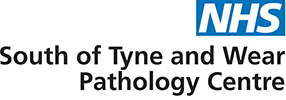Tryptase
Code:
TRYP
Sample Type:
2mL Serum (Gel 5mL Yellow tube)
Ref Ranges/Units:
µg/L
Basal levels are in the range of 2 to 14ug/L, with
peak levels of more than 40ug/L being associated
with anaphylaxis. Reference range established by
manufacturer and PRU. Verified in house
Turnaround:
14 days
Frequency of Analysis: Every 2 weeks
Special Precautions/Comments:
Method: Fluorescence Enzyme Immunoassay (FEIA). Calibration:Calibration against a manufacturers in house preparation which traces back to tryptase
purified according to Scwartz et al. EQA Scheme: UK NEQAS Scheme for Tryptase. IQC: Commercial preparation and kit control
Interpretation: For anaphylactic reactions, serial samples should be collected within one hour of reaction and subsequently at 3 and 24 hours, in order
to follow the kinetics of the tryptase release.
Interferences: Rheumatoid factor and human anti mouse antibodies may interfere with the assay [1].
Additional Information:
Indication: Anaphylaxis. Mast cell syndromes such as mastocytosis.
Background Information: Tryptase is a serine esterase characterised as a tetramer with a molecular weight of 144,000 Daltons and exists in an alpha and beta form. The mature tetrameric beta form is stored
within the mast cell granules. The enzyme consists of four non-covalently bound subunits, 2 alpha and 2 beta with each subunit having one active
enzymatic site [2]. The terameric form occurs in acidic conditions in the presence of heparin. Monomeric components occur in alkaline conditions. This assay measures total
tryptase and does not differentiate between the alpha or beta types. Mast cells play a key role in allergic reactions and increase in numbers under
inflammatory conditions. When activated, they degranulate and release a variety of mediators that lead to the signs and symptoms of allergic
reactions, such as systemic anaphylaxis. These mediators include tryptase and histamine [3]. Mast cells bear high affinity receptors for the Fc portion of IgE and linking two or more receptor bound IgE antibodies by allergen stimulates them to degranulate. Mast cells may also be activated by non-IgE mechanisms involving complement anaphylatoxins (C3a and C5a) or opiates. Isolated tryptase levels may be of value in the assessment of allergic disorders and
mast cell syndromes (mastocytosis).Systemic mastocytosis is associated with mast cell hyperplasia in skin lesions (urticaria pigmentosa), liver, spleen, lymph nodes and
bone marrow. In a study of tryptase levels in subjects with biopsy diagnosed mastocytosis, most of those with systemic mastocytosis had levels of total tryptase >20 ug/L [4].
References: Sargur R, et al. Raised tryptase without anaphylaxis or mastocytosis: heterophilic antibody interference in the serum tryptase assay. Clin Exp Imm. 2011. 163(3):339-345.
Ref 1] Caughey GH. Tryptase genetics and anaphylaxis. J Allergy Clin Immunol. 2006. 117(6):1411-1414. [Ref 1] Payne V and Kam PC. Mast cell tryptase: a review of its physiology and clinical significance. Anaesthesia. 2004. 59(7):695-703. [Ref 2] Schwartz LB. Clinical utility of tryptase levels in systemic mastocytosis and associated hematological disorders. Leukaemia research. 2001. 25:553-562. [Ref 3]
See Also: Specific IgE
Telephone Gateshead Lab: 0191.4456499 Option 4, Option 1


